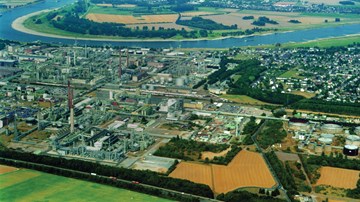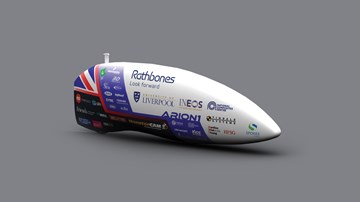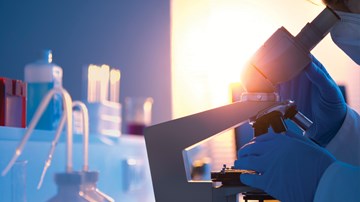Opportunities can come knocking at any time. The secret is to be ready, as INEOS knows only too well
INEOS could be sitting on another pot of gold.
First, though, it needs to convince the European Union that it should invest some of the €80 billion, which the EU recently set aside for world-class research and innovation, in its ideas.
“This is a great opportunity for us because it coincides with so much of what we are already doing,” said Greet Van Eetvelde, who manages INEOS’ Carbon & Energy Network and energises its Research & Innovation issue team. “We just need to be more visible and get involved because there is so much public support out there. Today these organisations can provide 100% of the funding for a project in industry which is fantastic motivation for collaboration.”
Greet was talking to INCH after the European Union announced the latest funding under its Horizon 2020 project, its biggest-ever programme to encourage research and innovation.
“This investment is intended to help reinvigorate the chemical industry,” she said.
Manufacturing plays a central role in the European economy. It turns over €7 trillion a year and provides 30 million direct jobs. Over the past few years, though, Europe’s ability to compete on a world stage has been slowly eroded by spiralling energy costs and restrictive legislation. And as companies have struggled, many R&I budgets have suffered.
Carlos Moedas, Commissioner for Research, Science and Innovation, said the EU needed to do something to increase Europe’s competitiveness.
“Research and innovation are the engines of Europe’s progress and vital to addressing today’s new pressing challenges like immigration, climate change, clean energy and healthy societies,” he said.
Horizon 2020 was launched on January 1st, 2014. Over seven years it has invested €77 billion to support Europe’s economic competitiveness and extend the frontiers of human knowledge. The EU research budget is focused mainly on improving everyday life in areas like health, the environment, transport, food and energy. It also wants to make it easier for the public and private sectors to work together on innovative solutions.
INEOS is already working furiously behind the scenes on a raft of initiatives. And it is linked to Horizon 2020 through its membership of a host of organisations including SPIRE (Sustainable Process Industry through Resource and Energy Efficiency), SusChem and PlastEU, all of which have added value to INEOS and help to raise its profile.
“All of these platforms share a similar ethos and are aimed at finding new ways of thinking and working to make the European industry more resource and energy efficient,” said Greet.
At INEOS she steers the company’s Carbon & Energy Network. It is made up of all businesses with over 100 representatives, all of whom have a genuine interest in improving efficiency in the most sustainable way.
Unlike other companies, INEOS does not have – nor does it want – a separate sustainability department. Instead it views it as a fundamental part of how it does business. It wants everyone to think about running the business in a way that safeguards it for generations to come.
The same applies to Greet’s network. All its members work elsewhere in the company.
But for Greet the focus is not just about saving energy.
“It is about seizing the opportunities that are all around us and not let them pass by,” she said. “As ever you have got to fall before you fly. But nothing ventured, nothing gained. If we can develop a good track record, we can hopefully attract more investment for INEOS.”
And that is the aim of creating a dedicated R&I team, within the Carbon & Energy Network, focusing initially on new opportunities.
In December Greet addressed the 7th European Innovation Summit at the European Parliament in Brussels.
“It is so important that we challenge business scenarios and solutions,” she said. “Why not make roads out of plastic? It’s not the general thought but it is about thinking outside the box.”
She said it was vital that all the key industries – chemical, steel, cement minerals, life sciences and engineering – found ways to make the most of their processes by sharing waste streams and resources.
Currently, poor understanding of each other’s processes is hindering that development, which she believes is critical if industry is to properly face the challenges ahead.
“We need to move from linear value chains to industrial symbiosis,” she said. “All these industries have more in common than they realise and they can work more efficiently together. Let them cross over.”
Greet said INEOS Technologies in France was currently starting a four-year European project to find ways for the six global process industries to work better together to save energy, money and resources.
The idea for the €5.1 million EPOS project, €3.7 million of which is being funded by the European Union and €1.4 million by the Swiss government, came about through SPIRE.
“When the industries got together recently, they thought they had nothing in common, so the mediator asked them to treat it like a speed dating exercise” said Greet. “Within minutes they realised they could work together. It was like ‘oh, you have those. We need those’.”
All these platforms, programmes and projects – SPIRE, Horizon 2020 and SusChem – are focused on creating a more sustainable world.
“We only have so much in terms of resources,” said Greet. “So we need to challenge our thinking in ways we have never done before.”
And that’s something that might just be possible, thanks to the latest boost from the European Union’s Horizon 2020 programme.
INEOS shares in the windfall
INEOS is no stranger to winning over the European Union.
Working in partnership with others, it has successfully secured millions of investment for projects that have helped to improve energy efficiency, stop resources being wasted and cut emissions.
INEOS O&P (Köln), INEOS Oxide in Belgium, INEOS Paraform (a part of INEOS Enterprises) in Germany, INEOS Chlor in the UK and recently INEOS Technologies in France have all been pro-active.
“All of these projects have either been successfully completed or are ongoing,” said Greet Van Eetvelde, manager of Cleantech Initiatives.
INEOS Paraform won EU funding to implement a novel purification technique to treat waste air in the manufacturing process of paraformaldehyde.
The plant, which has been producing chemicals at its site in Mainz, Germany, since 1856, needed to dramatically improve its emissions.
“At the time no feasible technology existed to improve the situation so the plant had been running with an exemption permit” said project manager Horst Schmolt.
INEOS carried out tests in a laboratory and a pilot plant showed that emission levels could be considerably reduced by setting up a plasma catalytic waste air treatment module on a large scale.
“It was something no one in our type of industry had ever tried before,” said Horst. “But it worked.”
Meanwhile, INEOS Chlor in the UK helped to secure investment towards developing a new computer system to help companies run their businesses more efficiently, and INEOS Oxide in Belgium worked with representatives from 17 companies from France, Germany, Spain, Norway, Denmark, Russia, Italy and the UK to secure investment to develop a new way of producing liquid fuels from natural gas.
Dr Stefan Krämer, site energy manager at INEOS O&P (Köln), is currently involved in two projects which have received a total of €5.5 million in funding from the EU.
One will be creating a system that allows the operators of large integrated chemical and petrochemical plants to manage resources and energy more efficiently without affecting production. That system is now being developed so that it can be used by other industries with similar production set-ups.
The other seeks to improve the reliability and efficiency of large interconnected systems, such as electric power systems, air traffic control towers, railway stations and large industrial production plants.
The latest to benefit is INEOS Technologies in France which is starting a four-year European project to find ways for the six global process industries to work better together to save energy, money and resources.
Greet said it was vital that all the key industries – chemical, steel, cement, minerals, life sciences and engineering – found ways to share waste streams and resources.
“All these industries have more in common than they realise and they can work more efficiently together,” she said.

















